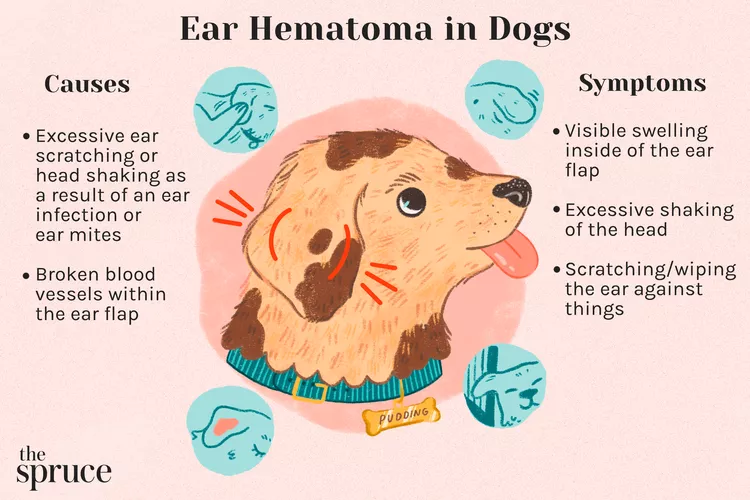
An ear hematoma is a pool of leaked blood that gathers underneath the skin, causing painful swelling and redness. Dogs frequently develop hematomas in the flaps of their ears, the outer portion of the ear connected to the sides or the top of your dog's head.
Learn more about this common ear ailment and how to treat it
Because ear flaps are very thin, there isn't much room for pooled blood should a blood vessel break underneath the skin. Consequently, the blood tends to create a pocket of swelling that can become large enough to affect the entire outer ear. You'll notice that your dog's ear looks swollen like a balloon, and the affected ear might droop more than the normal ear. Ear hematomas can feel squishy or firm, depending on the amount of swelling. They are very painful, and your dog will likely object to you touching the swollen ear.
An ear hematoma can cause the ear flap to partially or completely fill up with blood, giving the ear an inflated appearance. If the swelling is large enough, it can cover the opening of the ear canal. The extra weight of the ear flap can cause some discomfort, and may also lead to a permanent change in the carriage of the ears. Ear hematomas usually occur in just one ear but occasionally affect both ears.
If your dog is shaking its head, have it seen by a veterinarian right away. Early intervention may help reduce the chances of ear hematoma formation.
The main symptom of an ear hematoma is the swelling, which can become quite extensive. Because the hematoma is often due to an underlying ear infection, your dog will likely show a variety of symptoms due to the pain and irritation of both the hematoma and the infection, including:
If the ear is infected, as is usually the case with ear hematomas, you will probably notice signs of infection inside the ear, including excessive ear wax, black or yellowish crusts or spots of debris, and a foul odor.
Ear hematomas are created by a broken blood vessel inside the ear flap. This leads to bleeding underneath the skin. Because the tissue of the ear flap is thin, the blood doesn't have much room to spread out, so it tends to pool, leading to a swollen, balloon-like appearance of the ear.
The most common cause of ear hematomas is excessive head shaking due to an ear infection, allergies, or a foreign object inside the ear. Occasionally, however, your dog might develop a hematoma after a trauma to the ear, such as a bite from another dog or even an overly vigorous play session. And dogs with blood-clotting disorders are also more prone to developing hematomas, even without prior trauma or infection.
Due to the distinctive appearance of an ear hematoma, the diagnosis is generally quite straightforward. Your veterinarian will generally diagnose the hematoma simply by visual inspection but will be more concerned with the underlying cause. Thus, the vet will examine the inside of your dog's ears to see if there are signs of infection, allergies, or a foreign object stuck inside the ear canal. The vet might swab inside the ear and examine the specimen underneath a microscope, which can reveal bacteria or yeast.
Sometimes, your vet will recommend further diagnostic procedures, including needle aspiration of the fluid inside the hematoma to be certain it's just blood. And blood tests to assess your dog's overall health are often also ordered.
Sometimes an ear hematoma is so small that it may not need to be repaired. Left alone, the blood inside a small hematoma will eventually reabsorb. There is a risk, however, that an untreated hematoma, even if small, can leave your dog with a permanently scarred or deformed ear. That's why all hematomas should be assessed by a veterinarian, who will also provide pain medications and treatment for any underlying ear infection.
There are several options for repairing an ear hematoma. Your veterinarian will determine the right method for your dog. Here are some of the more common procedures.
This procedure involves using a needle attached to a syringe to remove fluid from the hematoma. However, the fluid will eventually return, sometimes within days, making this a temporary solution. It can also lead to infection within the ear flap. Still, some owners may prefer this method because it can provide instant relief and does not require surgery, making it the less expensive option. Instilling a steroid into the dead space can make this method more successful. A low dose of oral steroids may also be helpful.
Here, an incision is made in the ear flap surgically. The hematoma is drained of fluid and blood clots. Multiple sutures are placed in the hematoma area in a quilt-like pattern to prevent it from refilling. Usually, a small tube is left in place to serve as a drain for fluids as the area heals, and often tight bandages are applied over the ear to help reduce swelling. Sutures are typically left in place for up to three weeks to prevent recurrence of the hematoma.
A teat cannula is a small device used in the treatment of udder inflammation in cattle. These cannulas can also be surgically placed in a dog’s ear hematoma if the ear flap is large enough to accommodate it. The hematoma is drained of fluids and allowed to heal over several weeks. This method is generally successful, but the dog must tolerate the discomfort of the cannula in the ear flap while it drains fluid.
Because ear hematomas are most often caused by head-shaking due to an ear infection, the best prevention is to take steps to ward off possible ear infections before they become severe.
Regular inspections of your dog's ears are helpful; look for signs of trouble such as excessive wax, crusty debris, redness, or odor. Dry your dog's ears thoroughly after a bath or a swim, especially if your dog has floppy ears, as retained moisture can lead to the growth of yeast within the ear canal. Dogs that are prone to ear infections might need regular grooming and cleaning of their ears with vet-approved cleaner to prevent problems from developing.
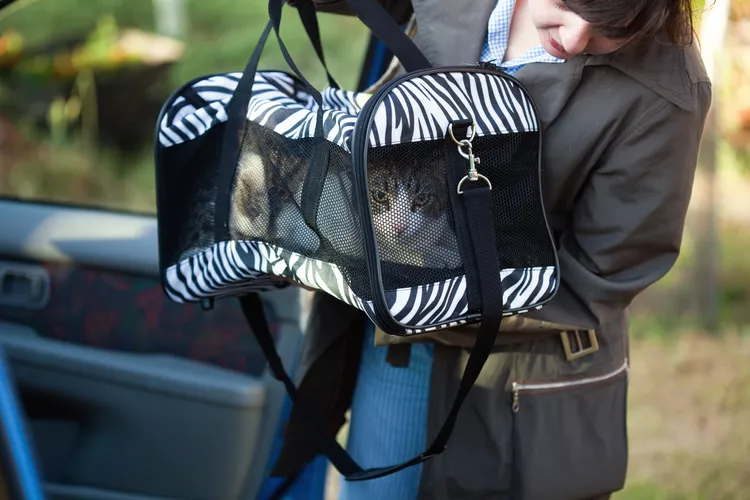
How to Take a Car Trip With Your Cat
Think you can't travel with your cat? Think again! Traveling with your cat just takes a little preparation and planning. Here's how.
How to Determine Your Cat's Age
Determining the age of an adopted cat is just guesswork, but a vet can look at teeth, sexual maturity, fur coat, and eyes to estimate.
Cat Food Ingredients to Avoid
When checking the nutrition content of cat food, look for ingredients that are not healthy or show it is of poor quality. Avoid these 3 ingredients.
What You Need to Know About Homemade Cat Food
If you want to cook for your cat, make sure to read about the risks associated with homemade diets for cats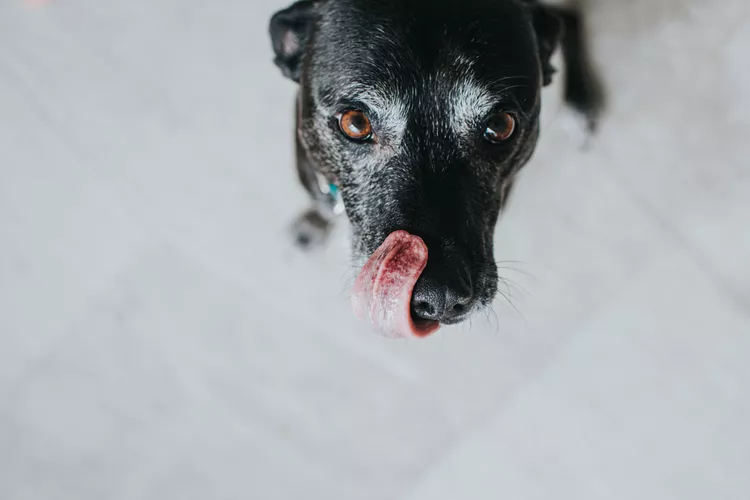
Can Dogs Eat Raw Chicken Feet?
What are the potential health benefits of chicken feet for dogs? What are the risks?
Macadamia Nuts and other Nuts That Are Toxic to Dogs
Find out why macadamia and other nuts are poisonous to dogs, what signs to look for, and what is needed to treat the toxicity.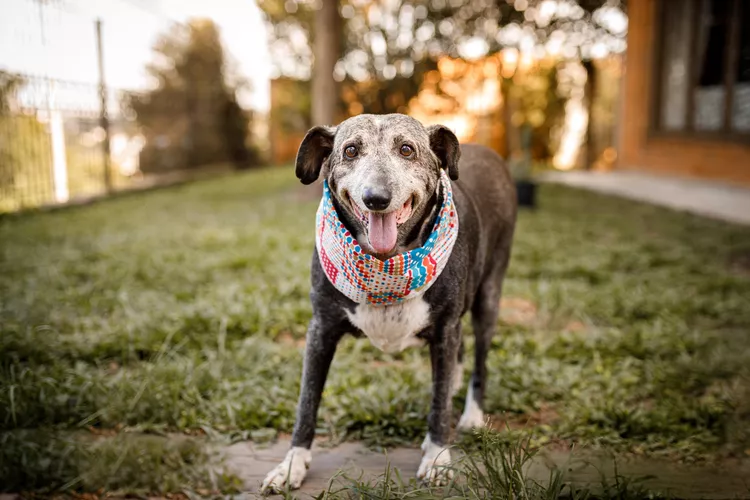
10 Tips for Taking Care of a Senior Dog
Is your dog a senior? Changes to their diet, exercise, and care are required. Here's how to make sure they're living their best and healthiest life.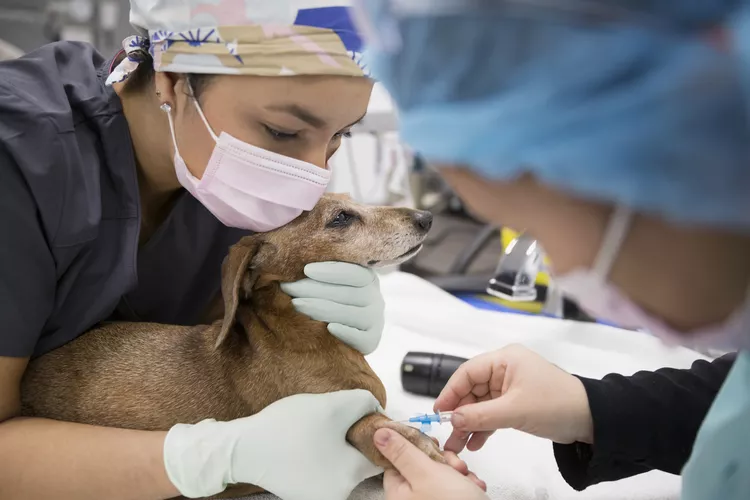
Hookworms in Dogs
Hookworms can make a dog uncomfortable but may also lead to serious blood loss and anemia. Learn the causes, treatment, and prevention.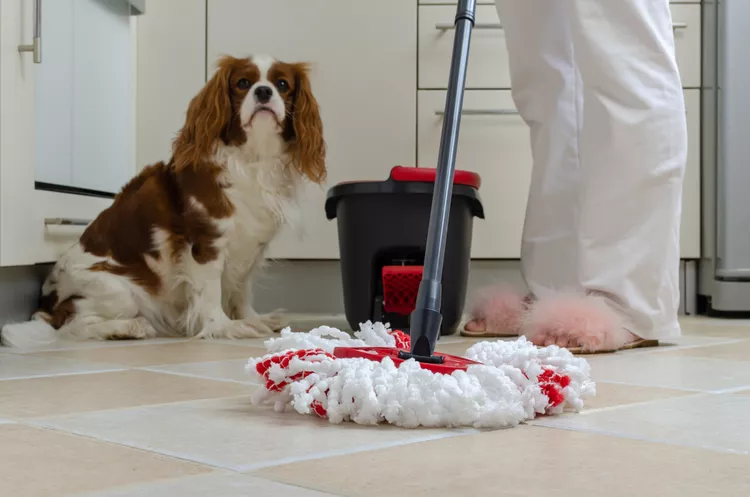
Is Swiffer WetJet Safe to Use Around My Pet?
ASPCA toxicologists deemed Swiffer WetJet to be safe for use around pets, but there are other all-natural floor cleaning options available.
Can Dogs Eat Bread?
Is bread a safe snack for you dog? Are there kinds of bread you should avoid? Learn more about whether it's okay to feed your dog bread.
14 Hypoallergenic Cat Breeds for People With Allergies
There are no true hypoallergenic cat breeds. But some, such as the Siamese and Siberian, might be less likely to cause allergies than others.
Burmilla: Cat Breed Profile, Characteristics & Care
The playful and social burmilla is one of the newest cat breeds to be officially recognized by the CFA. Learn about burmilla breed.
Nebelung: Cat Breed Profile, Characteristics & Care
The Nebelung is a rare breed of domestic cat that’s known for their long gray-blue fur and gorgeous green eyes. Learn about the Nebelung cat breed.
Cymric: Cat Breed Profile, Characteristics & Care
The Cymric, a long-haired Manx, is one of the world's oldest cat breeds. This tailless cat is friendly and playful. Learn about the Cymric breed.
Here's Why Cats Groom Themselves
Learn all about cats' grooming habits: how and why cats groom, including mutual grooming, over-grooming, and displacement grooming!
Pharaoh Hound: Dog Breed Characteristics & Care
Learn all about the Pharaoh hound, a sight hound dog breed known for their slim appearance and the ability to blush when excited.
How to Walk Your Dog
Dog walks should be fun for your dog while respecting your community. Learn why walking your dog is important and get essential safety and training tips.
How to Stop Your Dog From Whining
Whining is a natural way for your dog to communicate with you. Explore the reasons dogs whine and how to discourage your dog from whining too much.
How to Stop Your Dog From Barking Excessively
All dogs bark, but excessive barking is a behavior problem. Learn how to help stop excessive barking and prevent it from happening all the time.
How to Train Your Dog to Live With Another Dog
When you add a second dog to your household, it's natural that there will be an adjustment period. Learn how to get two dogs to become acquainted.